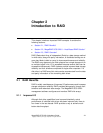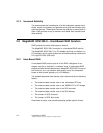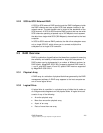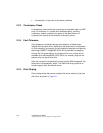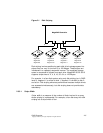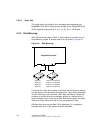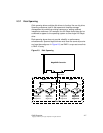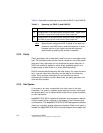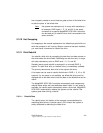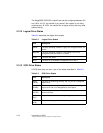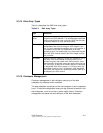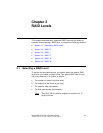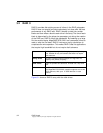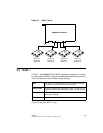
2-8 Introduction to RAID
Copyright © 2002 by LSI Logic Corporation. All rights reserved.
Table 2.1 describes how disk spanning is used for RAID 10 and RAID 50.
Note:
Spanning two contiguous RAID 0 logical drives does not
produce a new RAID level or add fault tolerance. It does
increase the size of the logical volume and improves
performance by doubling the number of spindles.
2.3.8 Parity
Parity generates a set of redundancy data from two or more parent data
sets. The redundancy data can be used to reconstruct one of the parent
data sets. Parity data does not fully duplicate the parent data sets. In
RAID, this method is applied to entire drives (dedicated parity) or to
stripes across all disk drives in an array (distributed parity).
RAID 5 combines distributed parity with disk striping. If a single disk drive
fails, it can be rebuilt from the parity and the data on the remaining
drives. Parity provides redundancy for one drive failure without
duplicating the contents of entire disk drives, but parity generation can
slow the write process.
2.3.9 Hot Spares
A hot spare is an extra, unused disk drive that is part of the disk
subsystem. It is usually in standby mode, ready for service if a drive fails.
Hot spares permit you to replace failed drives without system shutdown
or user intervention.
MegaRAID SCSI 320-0 implements automatic and transparent rebuilds
using hot spare drives, providing a high degree of fault tolerance and
zero downtime. The MegaRAID SCSI 320-0 RAID Management software
allows you to specify physical drives as hot spares. When a hot spare is
needed, the MegaRAID SCSI 320-0 controller assigns the hot spare that
Table 2.1 Spanning for RAID 10 and RAID 50
Level Description
10 Configure RAID 10 by spanning two contiguous RAID 1 logical drives.
The RAID 1 logical drives must have the same stripe size.
50 Configure RAID 50 by spanning two contiguous RAID 5 logical drives.
The RAID 5 logical drives must have the same stripe size.




